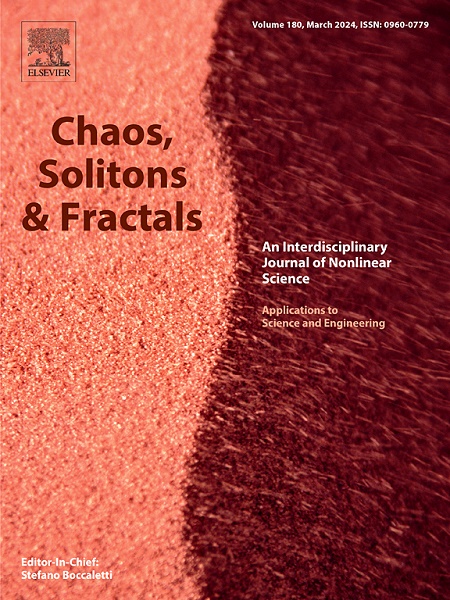Deterministic and stochastic dynamic analysis of a Parkinson’s disease model
IF 5.6
1区 数学
Q1 MATHEMATICS, INTERDISCIPLINARY APPLICATIONS
引用次数: 0
Abstract
Parkinson’s disease (PD) is closely related to high level of reactive oxygen species (ROS) and misfolded -synaptic protein (). A deterministic model of ROS and was proposed by Cloutier et al, who analyzed the effect of different stress signals on a switch from low level to high one for ROS. In this paper, we further investigate the existence and stability of a positive equilibrium of the deterministic model and derive the conditions on which the model experiences saddle–node bifurcation inducing a bistability with low and high levels. Then, a stochastic model of ROS and is formulated through considering Gaussian white noise into the deterministic one. The existence of global unique positive solution is analyzed and sufficient conditions for the existence of stationary distribution are provided for the stochastic model. Furthermore, noise-induced transition between the bistability is explored through confidence ellipse for the same noise intensity and the average number of alternations between the bistability and the average dominance duration that the model spends on a stable steady state for different noise intensity. Our results reveal that ROS displays bistability with low and high levels under moderate stress. In the presence of noise, the decreasing of stress and the increasing of noise intensity easily induce the transition from high stable steady state to low one to relieve the disease. In addition, smaller stress is an important factor in suppressing the transition from low stable steady state to high one, which also can be prevented by decreasing noise intensity for larger stress. Therefore, disease state can switch to healthy state through regulating noise intensity. Our results may provide a new idea to control noise to alleviate PD through physical therapy.
帕金森病模型的确定性和随机动力学分析
帕金森病(PD)与高水平的活性氧(ROS)和错误折叠的α-突触蛋白(αSYN∗)密切相关。Cloutier等人提出了ROS和αSYN *的确定性模型,分析了不同应激信号对ROS从低水平到高水平转换的影响。在本文中,我们进一步研究了确定性模型的正平衡的存在性和稳定性,并推导了该模型发生鞍节点分岔导致低水平和高水平双稳定的条件。然后,将高斯白噪声考虑为确定性模型,建立了ROS和αSYN *的随机模型。分析了全局唯一正解的存在性,给出了随机模型存在平稳分布的充分条件。此外,通过相同噪声强度下的置信椭圆,以及不同噪声强度下双稳态的平均交替次数和模型在稳定稳态上花费的平均优势持续时间,探讨了双稳态之间的噪声诱导过渡。我们的研究结果表明,在中等压力下,ROS表现出低水平和高水平的双稳定性。在噪声存在的情况下,应力的减小和噪声强度的增大容易引起高稳定状态向低稳定状态过渡,从而缓解疾病。此外,较小的应力是抑制低稳态向高稳态过渡的重要因素,也可以通过减小较大应力时的噪声强度来防止这种转变。因此,通过调节噪声强度,疾病状态可以切换到健康状态。本研究结果可能为通过物理治疗控制噪声以缓解帕金森病提供新的思路。
本文章由计算机程序翻译,如有差异,请以英文原文为准。
求助全文
约1分钟内获得全文
求助全文
来源期刊

Chaos Solitons & Fractals
物理-数学跨学科应用
CiteScore
13.20
自引率
10.30%
发文量
1087
审稿时长
9 months
期刊介绍:
Chaos, Solitons & Fractals strives to establish itself as a premier journal in the interdisciplinary realm of Nonlinear Science, Non-equilibrium, and Complex Phenomena. It welcomes submissions covering a broad spectrum of topics within this field, including dynamics, non-equilibrium processes in physics, chemistry, and geophysics, complex matter and networks, mathematical models, computational biology, applications to quantum and mesoscopic phenomena, fluctuations and random processes, self-organization, and social phenomena.
 求助内容:
求助内容: 应助结果提醒方式:
应助结果提醒方式:


